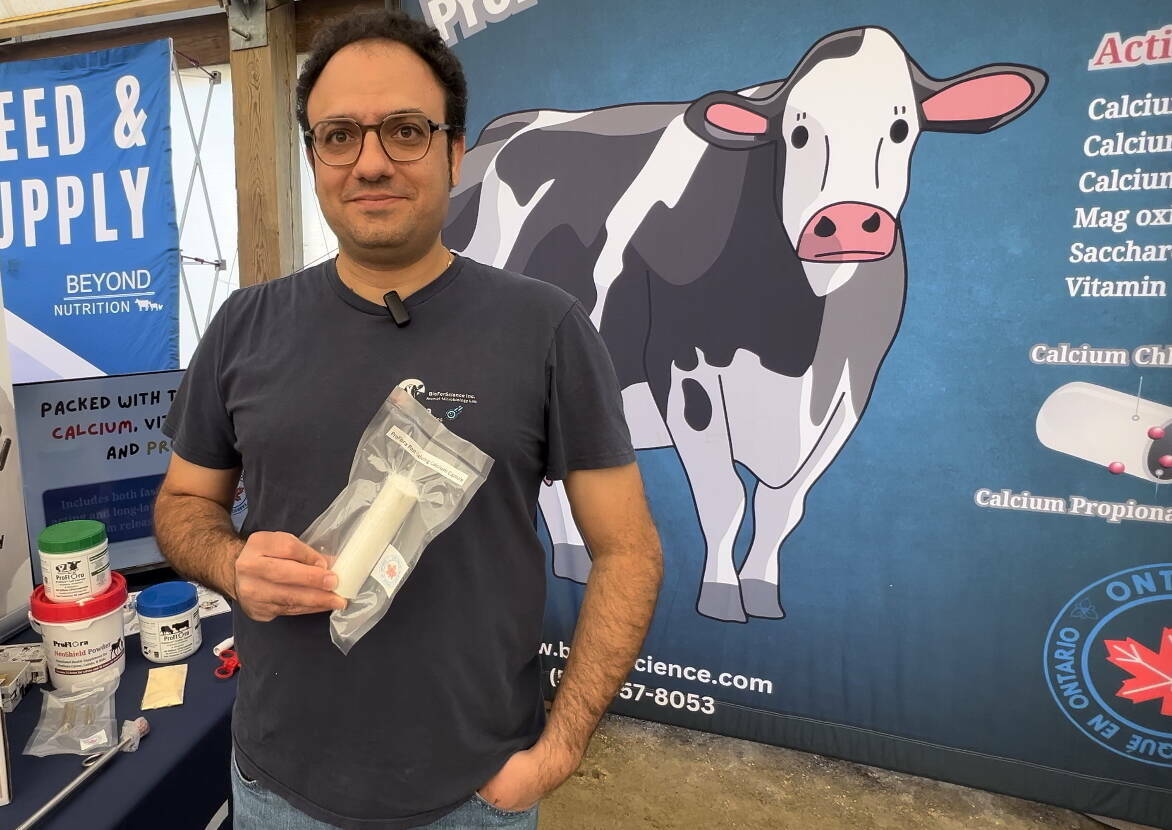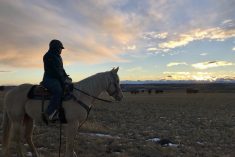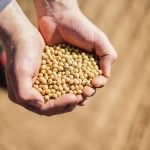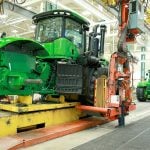[UPDATED: Jan. 10, 2023] The vast, expansive area along the eastern slope of the southwestern Rocky Mountains is stunning, no matter the time of year, with miles of native grassland, abundant creeks and critters: both cattle and carnivores.
However, the 22,500 acres of range at the Spruce Ranching Co-operative — locally known as the Spruce — wasn’t always picturesque.
*Joe Engelhart, a B.C. interior ranch kid, had been running a horseshoeing business near Bonnyville, Alta, when he arrived at the Spruce, located 100 kilometres southwest of Calgary, in 1999.
Read Also

Canadian Cattle Young Leaders, national Environmental Stewardship Award winner and more
Canadian beef industry news, including award winners and job changes.
In addition to the youthful energy, calm demeanour and tenacious spirit, as the ranch manager Engelhart also brought with him a different perspective on running the ranch. He wanted to implement strategies on grazing and water management, low-stress cattle handling and carnivore control, all while keeping the majority of the 41 shareholders content with the direction the co-op was heading.
That’s no easy feat, says Tyson Lowe, who has served as the co-op’s board president for the past eight years. “He is expected to do so many things and along with that (grass and herd management), he deals with all the members. Exits and outs. Sick cattle. All of it.”
“The fences and the grass were in pretty poor shape,” says Engelhart, who adds today there are 280 miles of fence around the ranch.
“I know every staple on every fence,” he says, chuckling. “It takes me two months to get around them every year.”
[RELATED] Electric fencing tips for fall and winter grazing
Focused on grass
With fences in disarray and grasslands to match, Engelhart knew he had to focus on the fences first to allow for rest and recovery of the native grasses.
“For quite a few years each owner would have his own a little piece of the place and that’s right where the cows stayed all summer.”
He uses the Spruce homestead field as an example. “It housed 280 cows from July 1 until October 1. That area was so badly overgrazed, the creek banks were black. There was nothing to hold them together. It would hardly grow grass anymore,” says Engelhart.
“The first major change Joe wanted to do was conglomerate some herds and run less of them,” says Lowe, whose family has been running cattle at the Spruce for three generations. “That way he had the flexibility to move them around and target more of a mob grazing mentality.

“I think that the benefits have really shown significantly in the last few years when it has been so dry,” says Lowe. “It would have been a different story if it was dry in June like it was last year. But I think we gained an extra year of buffer because of the grass management Joe has done.”
Today, the Spruce is home to over 4,500 animals from early June to late October, with 700 head of yearlings, 1,900 head of cow-calf pairs and 65 bulls. “I have 32 fields on the whole place. Each herd I rotate, on average, through four different fields. Every field is rated to an ‘X’ number of AUMs (animal unit month),” Engelhart says.
But just as Engelhart got the grasslands under control, a more dangerous problem was lurking on the horizon.
[RELATED] Ranching in a tough environment
Predator problems
“I started having trouble with the Willow Creek wolf pack,” says Engelhart, explaining that in 2002 he had three confirmed kills plus several injured cattle in the fall.
“By 2003 I started losing yearlings in late June to the wolves. Pretty much every day I was going out and finding something that they killed.”
By the end of that summer, Engelhart had 38 confirmed kills, due to a wolf pack that was nine adults and eight pups in size. “By early September their meat demand was pretty big. I was just chasing my tail that summer. I had game wardens and biologists here just about every day.”
A turning point came when biologist Charles Mamo trapped and collared eight wolves that August. Engelhart says, “I wasn’t going to just use the collars to go shoot all the wolves. It allowed me to know every morning the location of those wolves. Where they were hanging out, I’d go with them.”
Lowe agrees that Engelhart’s presence in the field helps with predator control. “I also believe — and I know Joe doesn’t like it — that sometimes action needs to be taken. But it doesn’t have to be because you see something, you need to do something.”
“I’m not against killing predators,” says Engelhart, “but it is not always my first option. Sometimes there are other options that work better. I look at the bigger picture, as with all other things, to ensure a positive outcome.”

No matter the predator problem Engelhart may face at the ranch, Lowe says his no-kill approach to wildlife management is still a touchy subject with some of the members.
“In my opinion, I’m in favour of it and for the most part, the board is in favour of it. But I think there are way less problems and that comes back to the whole grass management, moving things around and doing things differently every year. It alleviates a lot of that pressure.”
Low-stress livestock handling
To help keep predators in check, Engelhart started using low-stress livestock handling techniques. University of Wisconsin-Madison researcher and PhD candidate Naomi Louchouarn says there is science to support those practices.
“When I started looking into PhDs, I wanted to dig into this idea of conflict between conservation and people. That brought me into the world of livestock, which introduced me to Joe,” says Louchouarn, who at the time was working on her thesis that focused on livestock-carnivore coexistence in the northern Rockies.
[VIDEO] A guide to better cattle handling
In 2020, Louchouarn and Engelhart worked together on an experiment — “Low-stress Livestock Handling Protects Cattle in a Five-Predator System” — to bring in extra people to increase human presence in the field. Louchouarn then studied how the predator reacted.
“There were no predator attacks during the experiment,” she says. “This is a good sign that human presence is keeping cattle safe.”
Louchouarn says Engelhart is great at reaching out to other non-profits or conservation groups to become better educated, such as Cows and Fish, Multisar or Working Circle.
“He has challenges of course, but he works so hard to get through them and build relationships with people to get help. I think it’s so amazing,” she says.
“My goal as a researcher is to figure out how much human presence is even necessary out there in the field. How much can be done at home or at any time we are handling our livestock, to figure out how labour-intensive it is? And if it is more labour-intensive, the question becomes can we gain some of that money back (from lost time) in increased yields?” she says.
Engelhart is quick to recognize that time is not always on his side. “We’re always worried about how long it’s going to take. The biggest problem with stockmanship is the clock. If we would throw that away and just worry about how happy we’re going to keep an animal, that is more important.”
But not all members of the co-op are onside with change.
“To make a change with a whole bunch of members is difficult sometimes,” says Lowe. “Joe does a lot up there all on his own. Sometimes it might take him a couple of days to get 600 cows from one field to the next but he’s by himself. A lot of people don’t realize that. They always say he should go get some help or phone the members. Well, he does. And it’s not very often he gets help.”
Engelhart too has seen some pushback. “There’s a sense of ownership entitlement. It goes back four or five generations. Somebody might say, ‘Well, that’s fine but I don’t need to be told how to chase a cow.’ That very quote was told to me a couple of years ago. And that’s fine. It has taken me longer to unlearn all those bad habits. Once I started letting go of those bad habits, it’s amazing how enjoyable and how easy it is to move cattle.”
Lowe agrees that Engelhart’s stockmanship is second-to-none. “A grazing plan must be fluid because things change. His best quality right now is his willingness to try new things. His management plans are not just necessarily one year to the next; they are five-, 10-year plans to manage grass and water.”
For Engelhart, his program at the Spruce comes down to money. “I really like the economics part of it because while you’re teaching a bunch of cattle, you’re already gaining moneywise because you’re not stressing that animal out. You’re not losing those pounds while you’re teaching. Yes, it’s going to take a little more manpower. It might not take more actual bodies, but it will take more time,” Engelhart says.
“You have to invest the time. And time is money.”
And for the shareholders of the Spruce Ranching Co-operative, that investment will be a huge contribution toward the ranch’s resiliency and the sustainability of picturesque rangeland that is home to both cattle and carnivores.
*Update: In early 2023, Joe Engelhart left the Spruce Ranching Co-operative for Diamond Ranch south of Oyen, Alta.
Low-stress livestock handling
The low-stress livestock handling concept is not new, says University of Wisconsin-Madison PhD candidate Naomi Louchouarn. Dr. Temple Grandin of Colorado State University and Missouri stockman Bud Williams first developed low-stress livestock handling to reduce stress and improve livestock health.
“They combined ‘pressure and release’ herding, a form of interacting with livestock that takes advantage of livestock prey responses, to move livestock in a way that both enhances the choices and natural behaviours of the individual animal. These techniques improve livestock stress, health and yield. This combination creates a positive association between human actions and herding, which helps make livestock more willing to remain as a herd, relative to those who are aggressively handled and therefore associate herding with stress,” she says.
Tracey Feist has spent over 30 years in agriculture communications. Today she operates Bar Open A Ranches Ltd. and loves writing about the western way of life.
















